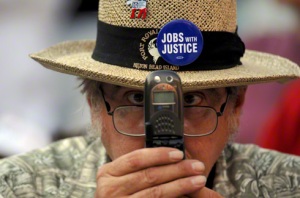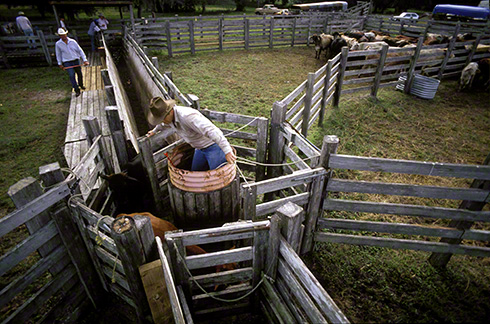
A factual story can be told in more ways and more places than journalists usually consider. © Kevin Moloney, 2010
Here’s a miniature manifesto for transmedia journalism:
We journalists need to find the public across a very diverse mediascape rather than expecting them to come to us. The days of the captive journalism audience are over, and if we hope to serve our ideals of democracy, human rights, environment and positive social change, we need to find a broad public.
To make our stories salient we need to engage the public in ways that fit those particular media. We lose an opportunity to reach new publics and engage them in different ways when we simply repurpose the same exact story for different (multi) media. Why not use those varying media and their individual advantages to tell different parts of very complex stories? And why not design a story to spread across media as a single, cohesive effort?
To define our goals I’ll remix and repurpose Henry Jenkins’ principles of transmedia storytelling to fit the journalist’s cause. There’s nothing new to invent for them. Examples of all of these principles have already appeared in journalism, they just haven’t been sewn together in a predesigned and expansive story campaign. This is no more a “digital first” idea than it is an entity of ink-on-paper or Murrow-esque broadcast news. But it could embrace all three of those methods as well as games, virtual reality, museum installations or even paper airplanes. It also requires no change in the ethical ideals journalists value.
Transmedia journalism should be:
- Spreadable: What makes a story infectious? How can we and do we inspire the public to share the stories we craft among their own networks, so they reach beyond our core public? Examples.
- Drillable: How can we activate the public’s curiosity, enough to sleuth out more depth and detail on their own? If there is more to be found — either among our own extensions of the storyline or among the world’s social and data networks — the public’s engagement will be deeper. Examples.
- Continuous and serial: As our stories expand across an array of media, how can they keep their continuity of shape, color and tone even as they leverage the strengths of each individual medium? By letting the story unfold across those media in series, would we keep public attention longer? Examples.
- Diverse and personal in viewpoint: Can reporting from a variety of perspectives strengthen the telling of a complex story or engage new publics we might have otherwise missed? What can we gain from letting the public in on the process and result of journalistic work? Examples.
- Immersive: We always want to draw our publics deeper into a story, to the point they forget they may be separate from it. How can we put alternative storytelling forms to work on a complex story, to better explain a system or help the public understand a story’s impact on its subjects? Examples.
- Extractable: What can the public take away from our work and put to use in their everyday lives? The more our reporting enters their world, the more engaged the public will be. Examples.
- Of real worlds: All our stories are the product of a real, complex and multifaceted world that is the envy of fiction writers. What can we do to embrace this complexity and nuance in journalism instead of always simplifying that world? Examples.
- Inspiring to action: Most of us become journalists in hope of changing the world for the better. How can we inspire the public to put down our pages or step away from the screen and fix a problem or reward a success? Examples.
For a more detailed look at these qualities and how they have worked individually already continue on to the full Transmedia Journalism Principles page under Contexts at the top of the window, or linked at the top of the column on the right. If you just tuned in, find more context to these ideas in earlier posts on this blog and their related pages.
Coming next: Building it. It may not be as complicated as you think.




